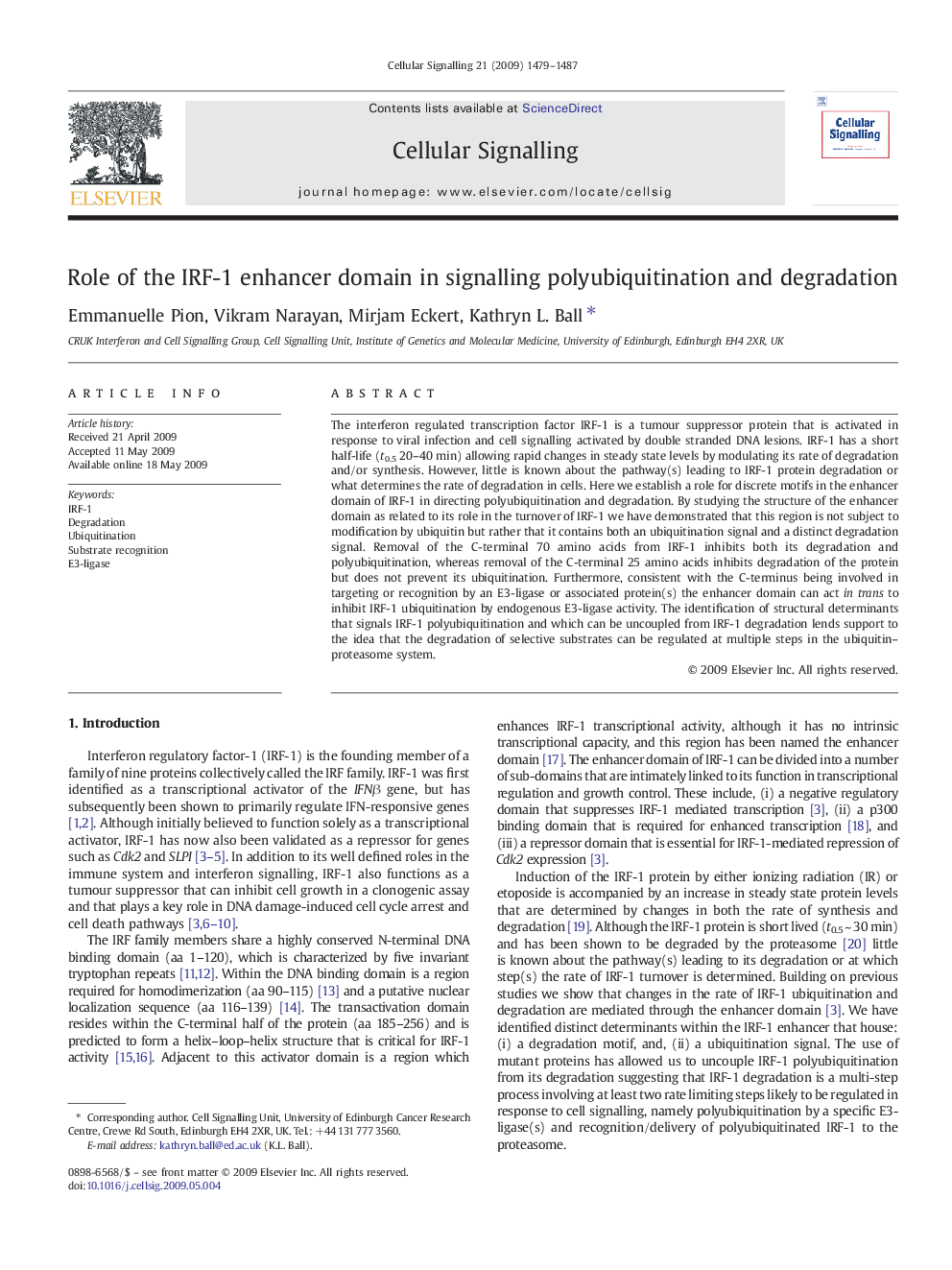| Article ID | Journal | Published Year | Pages | File Type |
|---|---|---|---|---|
| 1963870 | Cellular Signalling | 2009 | 9 Pages |
The interferon regulated transcription factor IRF-1 is a tumour suppressor protein that is activated in response to viral infection and cell signalling activated by double stranded DNA lesions. IRF-1 has a short half-life (t0.5 20–40 min) allowing rapid changes in steady state levels by modulating its rate of degradation and/or synthesis. However, little is known about the pathway(s) leading to IRF-1 protein degradation or what determines the rate of degradation in cells. Here we establish a role for discrete motifs in the enhancer domain of IRF-1 in directing polyubiquitination and degradation. By studying the structure of the enhancer domain as related to its role in the turnover of IRF-1 we have demonstrated that this region is not subject to modification by ubiquitin but rather that it contains both an ubiquitination signal and a distinct degradation signal. Removal of the C-terminal 70 amino acids from IRF-1 inhibits both its degradation and polyubiquitination, whereas removal of the C-terminal 25 amino acids inhibits degradation of the protein but does not prevent its ubiquitination. Furthermore, consistent with the C-terminus being involved in targeting or recognition by an E3-ligase or associated protein(s) the enhancer domain can act in trans to inhibit IRF-1 ubiquitination by endogenous E3-ligase activity. The identification of structural determinants that signals IRF-1 polyubiquitination and which can be uncoupled from IRF-1 degradation lends support to the idea that the degradation of selective substrates can be regulated at multiple steps in the ubiquitin–proteasome system.
